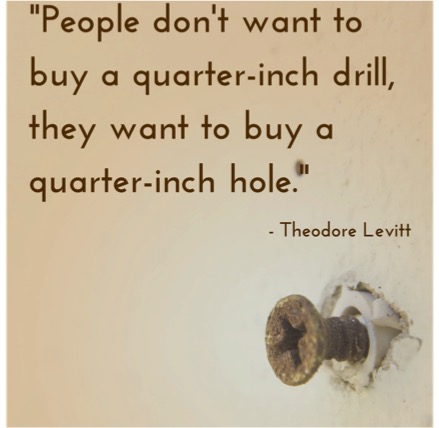For membership associations, total membership count tends to be one of the key pieces of data we report to our senior leadership, our Board, and often publicly. And up is always better, right?
Not necessarily.
First of all, to quote the Spark/Mariner Getting to the ‘Good Stuff’: Evidence-Based Decision Making for Associations:
More members may be better up to a point, but beyond that you risk bringing in marginal members whose commitment to your mission is incidental at best, whose contribution to your community will be minimal, and whose acquisition and renewal costs will exceed their marginal revenue. In other words, they’ll be a drain on your association’s resources.
(Joe Rominiecki talked about this concept recently in Associations Now, too.)
This is all focused on growing your market share, that is, getting more customers.
But there’s also the concept of growing your customer share, that is, getting your customers to have a larger relationship with you – to buy more stuff and be more involved.
Harvard Business Review recently highlighted this same trend in looking at “super consumers.”
“But my most involved members already are, well, really involved. They aren’t going to buy more, are they?”
Actually, they will. To quote HBR:
…superconsumers represent 10% of a category’s customers but account for 30% to 70% of sales and an even higher share of profits.
Admittedly, their study focused on consumer brands. But it reiterates a message associations would benefit from, one that I’ve written about before:
Assume you have 10,000 members. Your annual meeting regularly sees 500 attendees, at $500 a pop. Based on past attendance, your actual number of prospective attendees is about 1,000. And you have a $10,000 marketing budget.
Most of us proceed to blast undifferentiated messages out to the entire 10,000 members. Which means we can spend $1 per member trying to get people to our conference. What if, instead, we focused that $10,000 and our staff time ONLY on the 1000 prospects who are likely to attend? All of a sudden, we’re only managing 1000 contacts, not 10,000, and we have $10 per prospect to market the conference. What if those focused, high-impact messages aimed only at truly likely attendees could increase conference attendance from 500 to 700? At $500 a head, that’s an additional $100,000.
In other words, pay more attention to your super consumers, who are, again according to HBR:
…defined by both economics and attitude: They are a subset of heavy users who are highly engaged with a category and a brand. They are especially interested in innovative uses for the product and in new variations on it. They aren’t particularly price sensitive. (emphasis added)
These are the people who aren’t just members or attendees or readers – they LOVE your association and are willing to offer their time, expertise, and innovative ideas to make it better.
What are you doing to find them, to nurture them, and to let them know you appreciate them? Maybe if we all got off our “growth in (marginal?) membership, no matter what” hamster wheels, we could find out.





